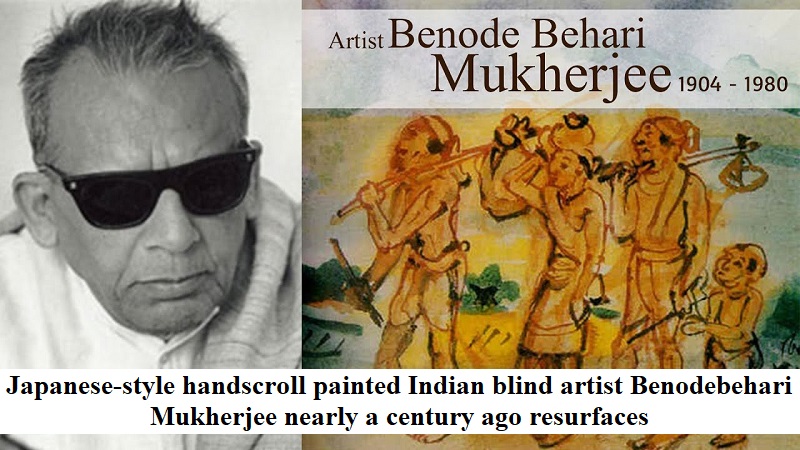
A momentous discovery has occurred in Kolkata, as a 44-foot-long handscroll in the style of Japanese art, painted by the renowned Indian blind artist Benodebehari Mukherjee nearly a century ago, has resurfaced and made its debut in his birth city.
Born in 1904, Mukherjee was visually impaired, losing his sight completely at the age of 53. However, he left an indelible mark as a painter, sculptor, and muralist, becoming a significant figure in 20th-century Indian modern art, according to the BBC.
This captivating handscroll, measuring only six inches in width, is titled “Scenes from Santiniketan” and is the longest scroll ever created by the artist. In July, it will embark on a journey to Santiniketan, the esteemed university town founded by Nobel Laureate Rabindranath Tagore a century ago, where Mukherjee himself had studied and later taught.
Having changed hands multiple times before finding its way to Kolkata, the scroll is now proudly displayed, providing a glimpse into Mukherjee’s artistic vision and the landscapes of Santiniketan.
Crafted skillfully by Mukherjee at the age of 20, the handscroll features ink and watercolor on meticulously layered sheets of paper. The initial frame portrays a figure seated under a tree, believed to represent the artist himself, guiding viewers on a mesmerizing journey through the enchanting Santiniketan.
As one moves from right to left along the scroll, a captivating voyage unfolds, depicting a passage through time and space. Mukherjee’s masterful brushstrokes transport the viewer into a forest of sal trees, with the colors transitioning from black ink to touches of green mirroring the changing seasons.
The scroll comes alive with 22 human figures, 22 cattle, three chickens, one dog, and one bird. Mukherjee cleverly employs empty spaces to portray the vastness of the land and sky.
Within the scroll, one can discern the artist’s solitude and a subtle expression of isolation, reflecting a state of life devoid of self-pity or bitterness, as noted by prominent art historian Siva Kumar.
Before this astounding discovery, Mukherjee’s longest-known work was a depiction of the khoai, a laterite soil terrain near Santiniketan, measuring slightly over 10 feet in length.
Notably, Mukherjee’s teacher at Santiniketan was the esteemed artist Nandalal Bose, who led the art school known as Kala Bhavan. Initially concerned about Mukherjee’s visual impairment, Bose shared his worries with Tagore, to which the poet and philosopher responded, “Is he sincere? Is he interested? Then let him be.”
Mukherjee’s fascination with the scroll format may have been influenced by Tagore and Bose, who had returned from Japan with prints of handscrolls. The scroll format provided unique possibilities, allowing the depiction of the passage of time in a fluid and dynamic manner.
After being acquired by Rakesh Sahni, the owner of Gallery Rasa in Kolkata, the handscroll resurfaced in 2017 from a collector. However, due to unforeseen challenges posed by the pandemic, its public exhibition was delayed by three years.
Alongside the unveiling of this remarkable handscroll, the Kolkata exhibition also showcases reproductions of Mukherjee’s other notable scrolls, including “The Khoai,” “Village Scenes,” and “Scenes in Jungle.” Notably, “Scenes in Jungle” is painted on the semi-circular pith of a banana tree and is currently housed in the prestigious Victoria & Albert Museum in London.

Post Your Comments